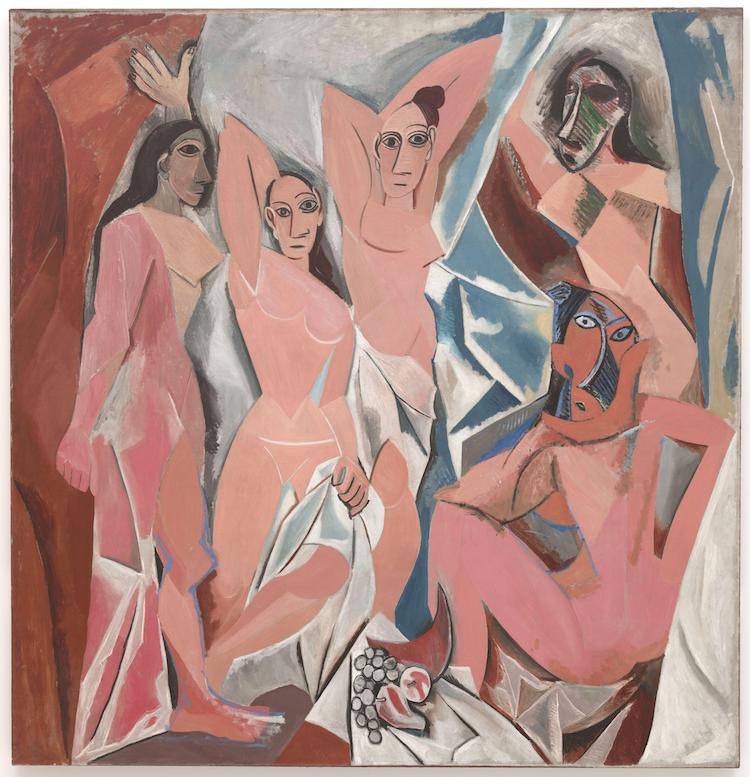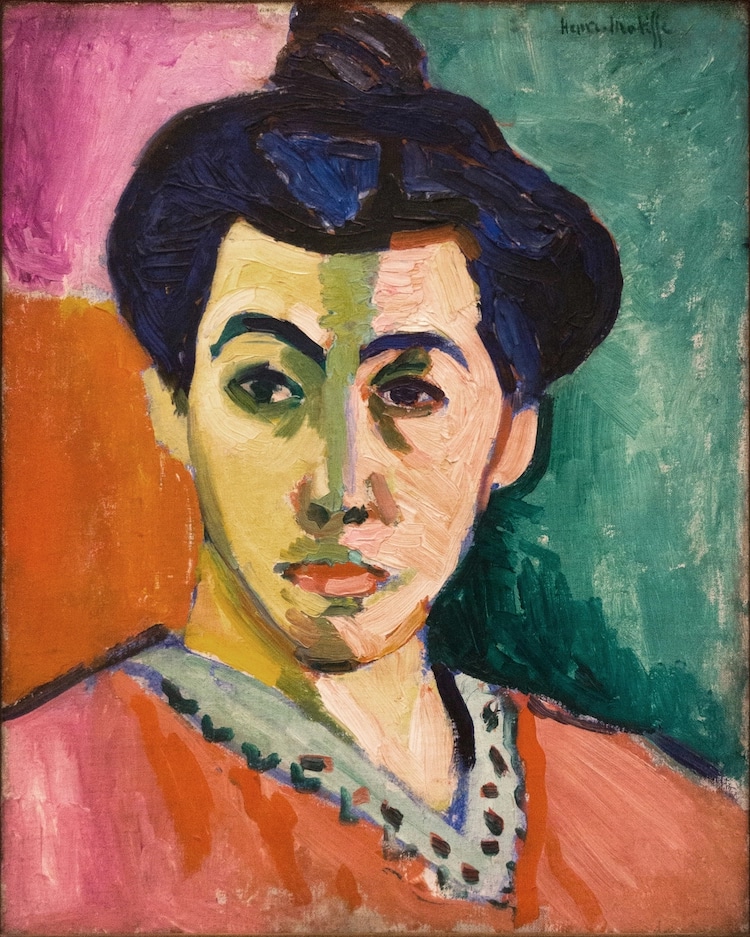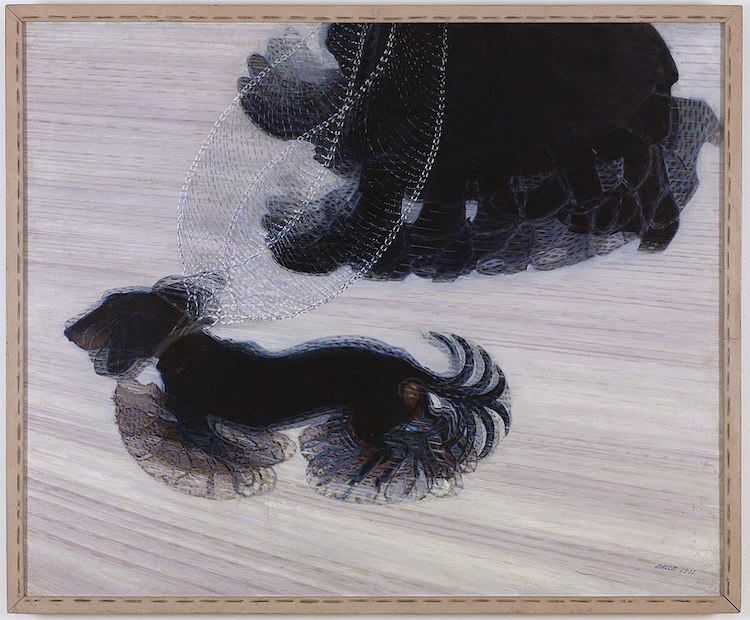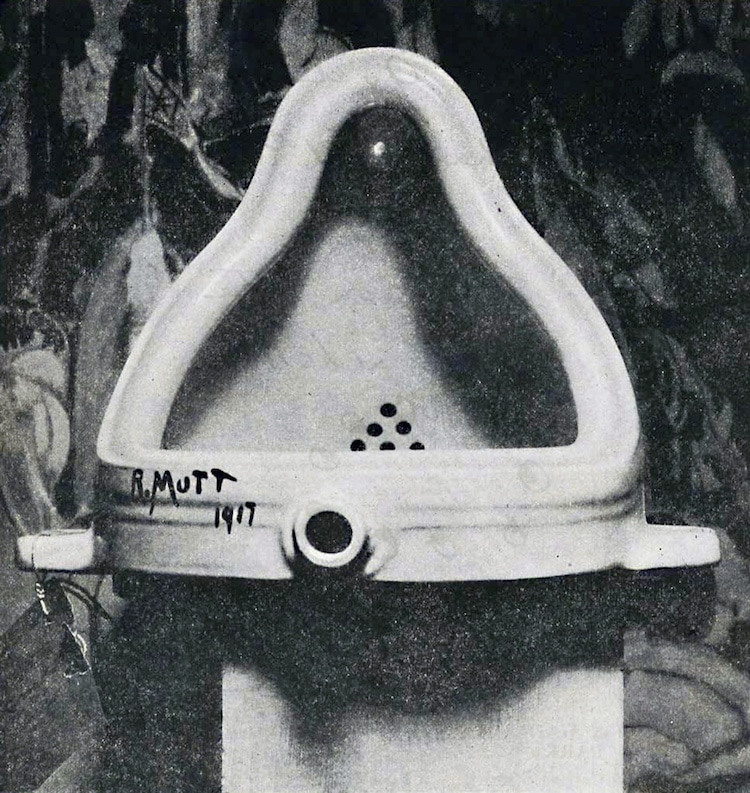
Pablo Picasso, “Le Demoiselles d’Avignon,” 1907 (Photo: MoMA via Wikimedia Commons, Fair use)
Bold, innovative, progressive, experimental—all words that describe art that pushes boundaries and creates change. These characteristics are also all associated with a term that is often used but sometimes misconceived—avant-garde. The French term, which translates to “advance guard” or “vanguard,” refers to something visionary and ahead of its time.
Used frequently to discuss artistic contributions to society and culture, avant-garde is responsible for some of the most famous paintings and sculptures in history. But how does one characterize avant-garde art? And who are the forward-thinking artists that took the risks that now define art history?
In terms of art, avant-garde is usually tied to some sort of aesthetic innovation—one that is often misunderstood or unaccepted in its own time. It’s a concept that applies to those creatives who have pushed against mainstream ideals and, though it’s often used in relation to modernism, there are plenty of historic artists whose work can be seen as avant-garde during their time.
Before we dive into some of the most well-known avant-garde artists and art movements, let’s look at where the term comes from and how it took on its current meaning. Initially, it was used by the French military and referred to a small group of troops that carried out reconnaissance ahead of the main army. Over the course of the 19th century, it began being applied to left-wing socialist thinkers and their calls for political reform. In fact, it was the influential French socialist Henri de Saint-Simon who first applied the term to art.
In an 1825 text, he grouped artists together with scientists and industrialists as leaders of society that could guide people forward. From there, avant-garde was a term regularly applied to artists, with many citing the realism of Gustave Courbet as a starting point. Subsequently, many modern movements would see the term applied, though one could easily say that earlier artists like Leonardo da Vinci or Caravaggio were certainly avant-garde by breaking with traditional art practices. Even the Italian Renaissance itself was an avant-garde movement for its attention to perspective and realism in a way that was unheard of previously.
Avant-Garde Art Movements
While this is by no means an exhaustive list, here are some of the more memorable modern art movements in Western history that are considered avant-garde for breaking boundaries.
Impressionism

Claude Monet, “Impression Sunrise,” 1872 (Photo: Wikimedia Commons, Public domain)
While Impressionist art may not seem avant-garde by contemporary standards, the movement was revolutionary in its time. Rejected by the traditional Paris Salon, painters like Claude Monet, Edgar Degas, and Pierre-Auguste Renoir favored landscapes and scenes of daily life over the accepted historical and mythological subjects. They also broke with tradition by moving out of the studio and painting en plein air.
Iconic Impressionist Paintings:
- Impression, Sunrise by Claude Monet
- Luncheon of the Boating Party by Pierre-Auguste Renoir
- Paris Street: Rainy Day by Gustave Caillebotte
- Check out this list to see 15 famous Impressionist paintings.
Fauvism

Henri Matisse, “Portrait of Madame Matisse. (The Green Line),” 1905 (Photo: Statens Museum for Kunst via Wikimedia Commons, Public domain)
Impressionism triggered a wave of innovative artists and styles. Among them was a brief but powerful movement called Fauvism. Co-founded by French artists Henri Matisse and André Derain, the style of les Fauves, or “the wild beasts,” is characterized by a saturated color palette, thick brushstrokes, and simplified—often nearly abstracted—forms. Fauvism acted as a transitional period for many of the artists associated with it, most notably Matisse and Georges Braque. Following its conclusion in 1910, these figures used their Fauve experience to embark on new projects and enter new periods.
Iconic Fauvist Paintings:
- Portrait of Madame Matisse by Henri Matisse
- Woman with a Hat by Henri Matisse
- Charing Cross Bridge by André Derain
Futurism

Giacomo Balla, “Dynamism of a Dog on a Leash,” 1912 (Photo: Wikipedia, Public domain)
Founded in 1909, Futurism was an avant-garde movement that embraced innovation, technology, and transportation—all components of the future they saw after WWI. A hallmark of Futurist art is the depiction of speed and movement. In particular, they adhered to principles of “universal dynamism,” which meant that no single object is separate from its background or another object. Italian sculptor and leading futurist artist Umberto Boccioni explained the movement: “We synthesize every moment (time, place, form, color-tone) and thus paint the picture.”
Iconic Futurist Art:
- Unique Forms of Continuity in Space by Umberto Boccioni
- Dynamism of a Dog on a Leash by Giacomo Balla
Dada

Marcel Duchamp, “Fountain,” 1917 (Photo: Wikimedia Commons, Public domain)
Dada can be a difficult movement to pin down because the output of its artists is so diverse. It was formed in Switzerland during World War I and is revolutionary for its focus on making work that wasn’t necessarily aesthetically pleasing. Its purpose, instead, was to question capitalist society and its values. Dada also made use of readymades—everyday objects appropriated as pieces of art—as a way to question bourgeois sensibilities and the role of the artist in creativity. Dada had a profound influence on other avant-garde movements that followed, like Cubism and Fluxus.
Iconic Dada Art:
- Fountain by Marcel Duchamp
- Glass Tears by Man Ray
- The Art Critic by Raoul Hausmann
Surrealism
 Surrealism is a highly experimental genre based on principles of the subconscious mind, borrowed from a literary technique called automatism. This break from reality gave Surrealist artists like René Magritte, Salvador Dalí, and Man Ray complete creative freedom, as they were no longer guided by academic principles. The dreamlike scenery of their art combines realistic renderings of fantastical subject matter. Surrealists were also well-known for dabbling in many forms of art, from painting and sculpture to photography and film.
Surrealism is a highly experimental genre based on principles of the subconscious mind, borrowed from a literary technique called automatism. This break from reality gave Surrealist artists like René Magritte, Salvador Dalí, and Man Ray complete creative freedom, as they were no longer guided by academic principles. The dreamlike scenery of their art combines realistic renderings of fantastical subject matter. Surrealists were also well-known for dabbling in many forms of art, from painting and sculpture to photography and film.
Iconic Surrealist Art:
- The Persistence of Memory by Salvador Dalí
- The Son of Man by René Magritte
- The Great Masturbator by Salvador Dalí
Cubism
By completely abandoning traditional forms and moving toward abstraction, Cubism is one of the most well-known avant-garde movements. Founders Georges Braque and Pablo Picasso played with all the traditional, academic rules of Western art and transformed them into a new, unexpected method for creating art. Figures were broken into geometric shapes, colors were brightened and simplified, and collage was incorporated for an innovative result that continues to shape art today. In fact, looking at a timeline of art history, Western visual culture can be split clearly into two pieces—before and after Cubism.
Important Cubist Artworks:
- Les Demoiselles d’Avignon by Pablo Picasso
- Three Musicians by Pablo Picasso
- Guernica by Pablo Picasso
- Still Life with Metronome by Georges Braque
Fluxus
Taking shape in the 1960s and 1970s, Fluxus is an interdisciplinary movement that involved artists, designers, composers, and poets. Heavily influenced by Dada, members of Fluxus staged performance art events that included noise music, poetry readings, time-based performances, and much more. Composer John Cage had a great deal of influence in Fluxus and his notion that interaction between an artist and the audience was the most important phase of work—rather than the finished product—was often followed. Avant-garde artists like Joseph Beuys, Yoko Ono, and Nam June Paik were all active in Fluxus.
Important Moments in Fluxus:
- Cut Piece by Yoko Ono
- Zen for Film by Nam June Paik
- Make a Salad by Alison Knowles
This article has been edited and updated.
Related Articles:
13 Revolutionary Art Movements That Have Shaped Our Visual History
10 Great Hispanic Artists Who Shaped Western Culture
Why Post-Impressionist Painter Paul Cézanne Is Known as the “Father of Modern Art”
What is Modern Art? Exploring the Movements That Define the Groundbreaking Genre

